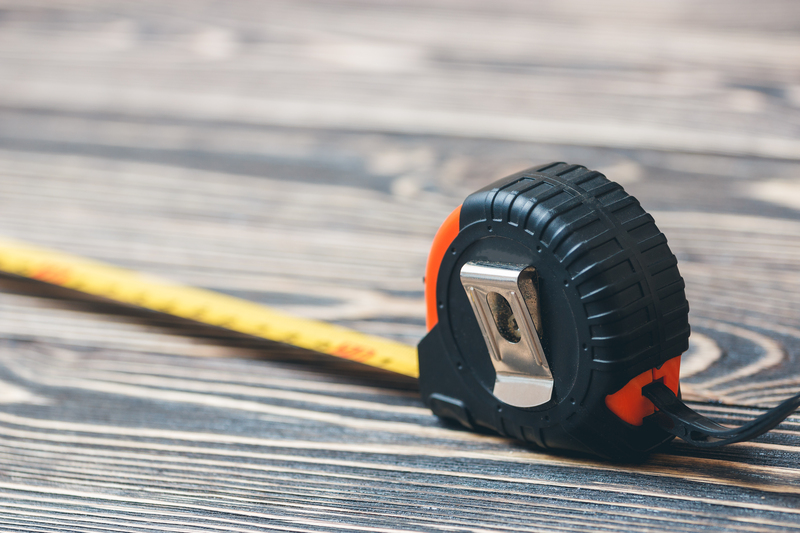How to Avoid Pitfalls When Moving Your Bed and Mattress
Posted on 15/06/2025
How to Avoid Pitfalls When Moving Your Bed and Mattress
Moving can be a stressful experience, particularly when it comes to transporting your bulkiest furniture--your bed and mattress. While it might seem straightforward, moving a bed and mattress comes with unique challenges that, if not handled correctly, can result in damage to your possessions or even personal injury. This comprehensive guide will help you understand how to avoid common mistakes and simplify the process of relocating your bed and mattress safely and efficiently.
Why Careful Planning Matters When Moving a Bed and Mattress
Transporting your bed and mattress isn't as simple as picking them up and loading them into a truck. Due to their size, weight, and awkward shape, these items require a careful strategy to move safely. Not only do you want to protect your valuables, but you also need to safeguard your home from accidental scrapes, and--most importantly--prevent injuries.
Benefits of Moving Your Bed and Mattress Properly
- Prevents Damage: Proper handling reduces risks of tears, scratches, and stains.
- Protects your investment: Extends the life of your mattress and bed frame.
- Avoids Injury: Lifting and handling heavy furniture safely is crucial for your health.
- Makes reassembly easier: Organized packing makes it simpler to put your bed back together in your new home.
- Saves time and money: Reduces the risk of causing property damage that could result in extra costs.

Common Mistakes and Pitfalls When Moving Beds and Mattresses
To ensure your move goes smoothly, it helps to know the most frequent missteps people make while moving a bed and mattress:
- Attempting to move alone: Beds and mattresses are heavy and unwieldy; trying to handle them without assistance risks injury and property damage.
- Not measuring doorways and stairs: Oversized mattresses may not fit through certain passages if not measured first.
- Poor packing or protection: Failing to wrap your mattress and bed frame leaves them vulnerable to dirt, water, and damage.
- Improper lifting technique: Carrying heavy items incorrectly can lead to strains or back injuries.
- Disassembling without labeling: Forgetting to label hardware and bed components can complicate reassembly.
- Skipping inspection for damages or pests: Not inspecting before and after moving can bring unwanted pests and aggravate existing damage.
Avoiding these pitfalls when moving your mattress and bed sets you up for a successful transition.
How to Prepare for a Successful Bed and Mattress Move
Preparation is key to avoiding issues when moving your bed and mattress. Follow these critical steps before your moving day:
1. Take Measurements and Plan Your Route
- Measure your mattress, bed frame, and box spring to ensure they will fit through doorways and hallways at both your current and new locations.
- Clear a path by moving other furniture or objects out of the way.
- If using stairs or elevators, check weight and size restrictions.
2. Gather Essential Packing Materials
- Mattress bags or covers: Protect against dust, dirt, and moisture.
- Bubble wrap, moving blankets, or furniture pads: Wrap your bed frame (especially fragile or ornate parts) to prevent scratches.
- Heavy-duty packing tape: Secure packing materials in place.
- Plastic zip bags: To collect and label screws, bolts, and small hardware.
- Permanent markers or colored stickers for labeling parts.
- Basic toolkit (screwdrivers, wrenches, etc.) for disassembly and reassembly.
3. Disassemble the Bed Frame
- Carefully follow manufacturer's instructions to avoid damaging parts.
- Label each part (headboard, footboard, rails, slats) and corresponding hardware.
- Place small hardware in labeled zip bags, and tape them securely to a main bed component or keep them in a box for easy access.
4. Inspect and Clean
- Check your mattress and bed frame for any signs of infestation (like bed bugs) or damage before you move them.
- Vacuum and clean surfaces for a fresh start in your new home.
- Take photos of each item before the move in case you need to file an insurance claim for damages.
5. Protect Your Mattress and Bed Components
- Slide your mattress into a high-quality protective bag and seal it tightly to keep out moisture and debris.
- Wrap each bed component in moving blankets or bubble wrap, and secure with tape.
- Double-check the packaging is tight; loose wrappings can snag and rip.
How to Move Your Bed and Mattress Without Trouble
Now that you're prepared, the actual moving process is much less daunting. Here's what to do:
Enlist Helpers or Movers
Moving a bed and mattress is rarely a one-person task. Recruit at least one other person, or consider hiring professional movers if you have any doubts about handling the move yourself. Lifting with a team prevents injuries and helps avoid property damage.
Use Proper Lifting Techniques
- Bend your knees, not your back! Always lift with your legs and keep your back straight.
- Coordinate with your helpers, lifting and moving in sync.
- Wear gloves to protect your hands from sharp edges and to maintain a firm grip.
Transporting the Mattress
- When possible, stand the mattress upright to maneuver through tight spaces.
- If using a moving truck or van, secure the mattress flat against a wall to prevent it from bending or warping in transit.
- Avoid placing heavy objects on top of the mattress.
- For long-distance moves, especially with foam or hybrid mattresses, laying flat is best to protect structural integrity.
Moving the Bed Frame
- Carry components one at a time, especially large parts like headboards or footboards.
- Use furniture dollies or carts for heavy or awkward pieces.
- Take care on stairs: Maintain balance, go slowly, and communicate with your helpers.
- Do not drag wooden or metal parts; always lift clear of the floor to prevent scratches.
Driving and Unloading
- Drive carefully to minimize bumps and jostling in the truck.
- Unpack and inspect your mattress and bed components for any damage immediately.
- Clean again if needed before reassembly.
Tips for Avoiding Damage and Stress on Moving Day
- Set aside extra time: Rushing increases the risk of accidents and missed steps.
- Prepare a clean, open area for reassembly in your new home.
- Double-check all packing materials are removed before placing your mattress and assembling your bed.
- Refer to your photos or instructions to ensure components are properly reattached.
- If your bed frame is missing hardware, don't improvise with mismatched screws--order the correct parts to prevent damage.
Special Considerations: Moving Different Types of Beds and Mattresses
The specifics of your move may vary based on bed and mattress type.
Memory Foam, Latex, and Hybrid Mattresses
- Never bend or roll thick foam mattresses beyond what the manufacturer advises--this can damage the materials.
- Long-term compression (folding or leaning for days) can permanently deform the mattress.
- Always use strong, water-resistant mattress bags, as foam is especially prone to soaking up moisture.
Adjustable Beds
- Disengage the mechanisms according to the manufacturer's guidelines.
- Carefully pack electronic components, remotes, and cords in labeled bags or boxes.
- If possible, transport heavy bases with dollies and avoid tilting excessively.
Platform Beds and Slatted Frames
- Keep track of each slat to simplify reassembly.
- Mark slats and frame sections if they are not interchangeable.
- Use straps or bungee cords to bundle similar pieces together and reduce loss.
When Should You Hire Professional Movers?
While a DIY approach can save money, hiring professional movers ensures your bed and mattress are moved efficiently and securely. Especially consider professional help if:
- You have a large or heavy bed (such as a king-size with hardwood frame).
- Your home has narrow staircases, tight corners, or no elevator access.
- You own a high-value or antique bed that requires extra care.
- You don't have enough people to help you move safely.
- You want insurance coverage for peace of mind.
If you opt for professional movers, ask about their experience with moving beds and mattresses, and verify they use proper packing materials and techniques.

Frequently Asked Questions About Moving Beds and Mattresses
Can I transport a mattress on my car roof?
While it's tempting, it's not recommended to move a mattress on your car roof due to safety risks and potential damage. Always use a vehicle large enough to fit the mattress inside or secured flat in a covered truck.
How do I protect my mattress from bed bugs during a move?
Use an encasement cover designed to be bed-bug-proof. Do not pick up discarded mattresses during your move, and inspect your own thoroughly before and after.
How soon can I sleep on my mattress after moving?
If your mattress is in good shape (no bends, tears, or wet spots), you can use it immediately. Allow time to air out if it smells musty or has been compressed.
Conclusion: Move Your Bed and Mattress With Confidence
Avoiding the common pitfalls of moving your bed and mattress is achievable with planning, proper tools, and careful handling. Take the time to prepare--measure, disassemble, protect, and move with patience. Whether you're performing a DIY move or hiring professionals, following the above tips and techniques will help ensure your bed and mattress arrive in pristine, ready-to-use condition in your new home.
With this complete guide on how to avoid pitfalls when moving your bed and mattress, you'll be able to rest easy knowing your most important piece of furniture is in good hands every step of the way.
```


